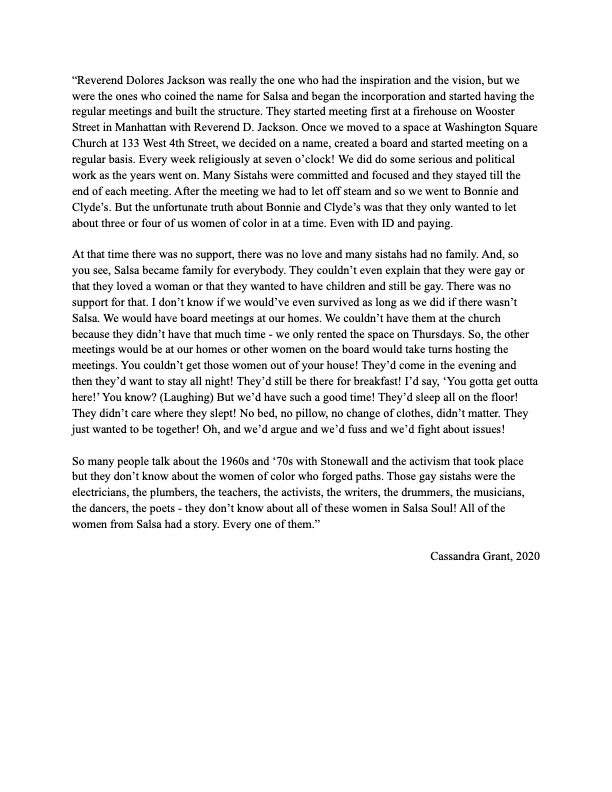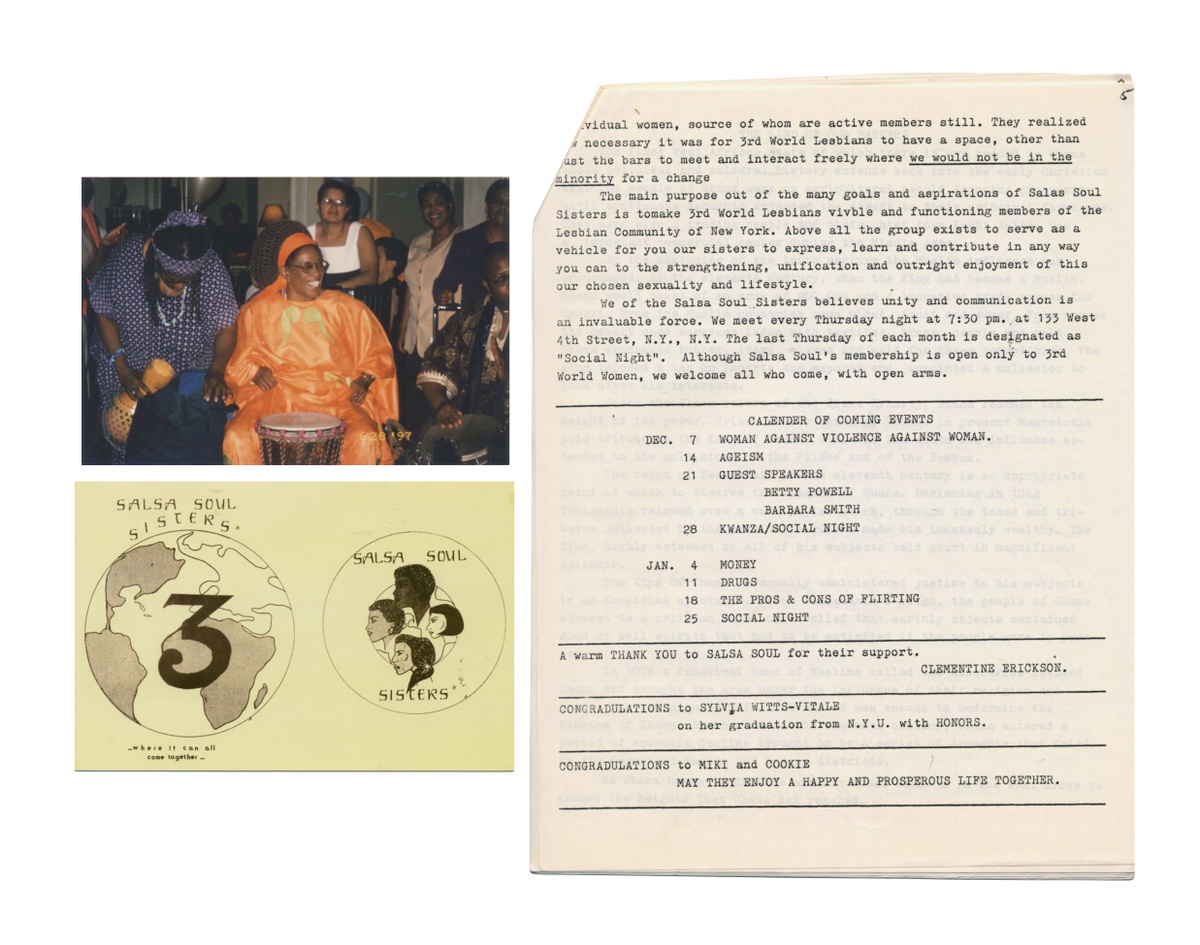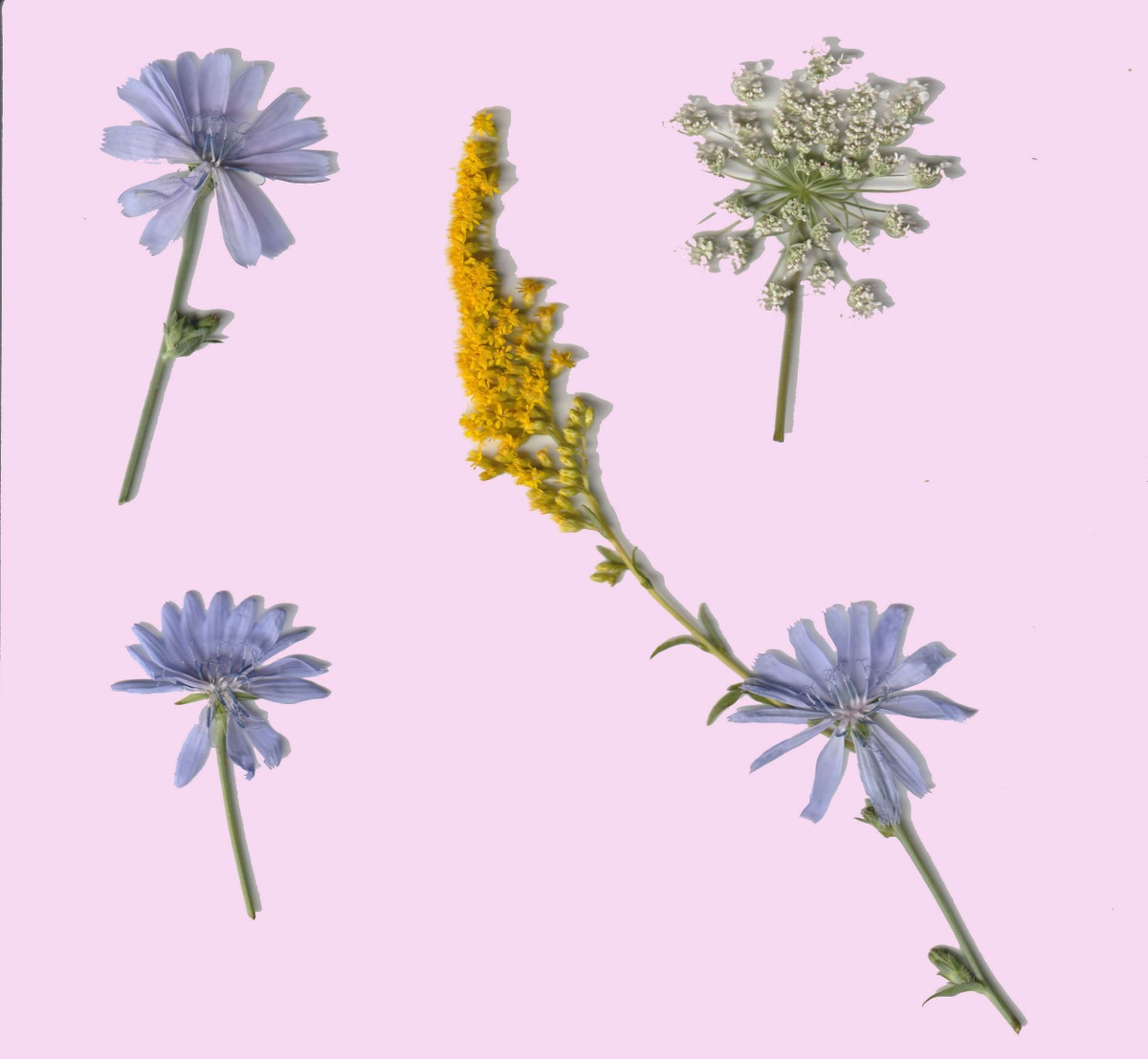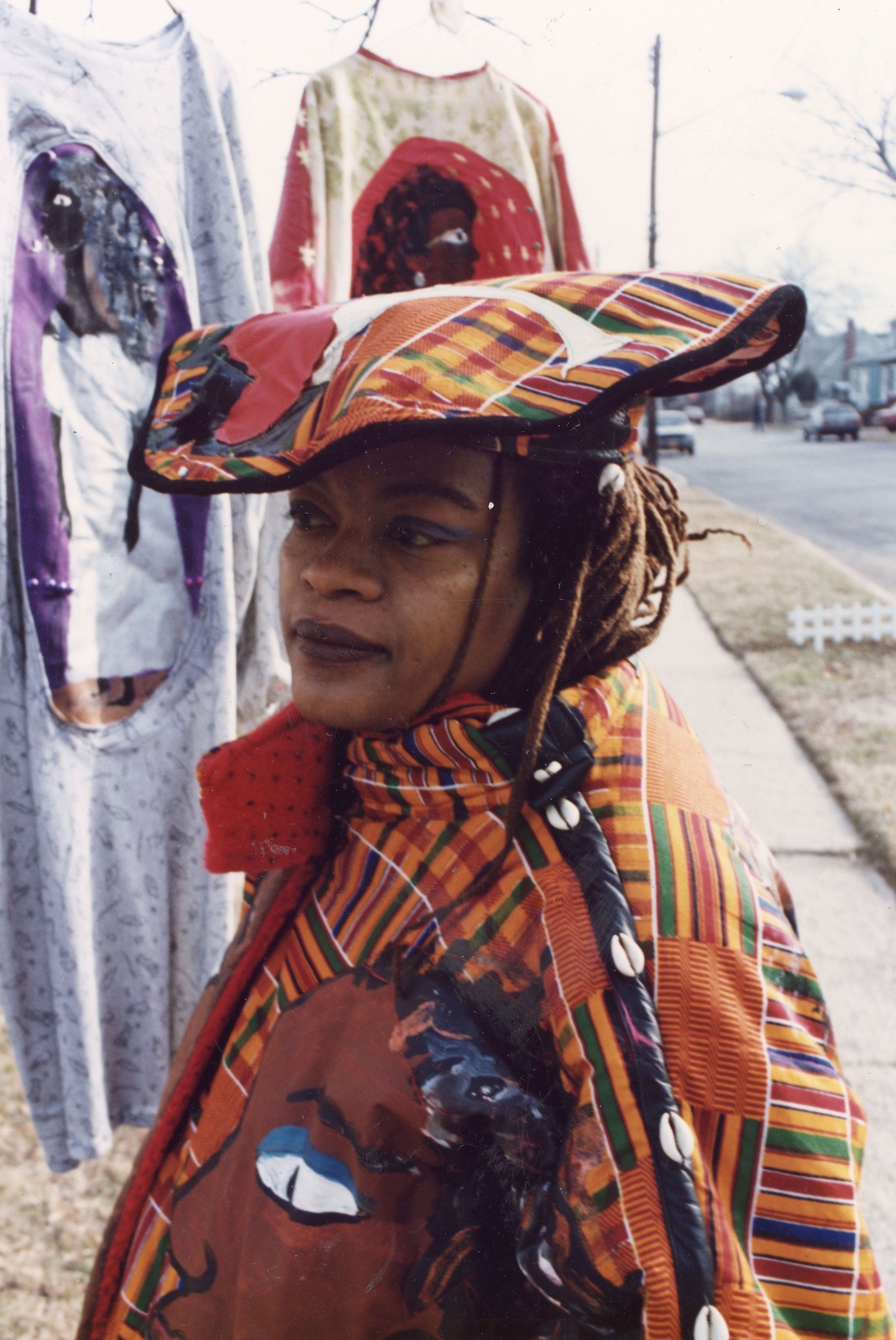Project Feature: Addresses Project, Part 1
Allison Elliott Aug 25, 2022 18 Minute Read
Welcome to our new Project Feature series, where we highlight independent memory projects on our blog to explore the intricacies and importance of these projects in documenting feminist contributions to culture! Additionally, we will ingest objects into our digital archive to further preserve and connect these materials with other feminist documentation.
As many lesbian and queer spaces disappear around the U.S., Addresses Project, created by Gwen Shockey in 2016, provides necessary documentation while mending a fragmented queer cultural record through intra-community connection. The project highlights lesbian and queer spaces, specifically in New York City from the early 1900s to present. Shockey utilizes a multi-medium approach, ranging from oral history and digital mapping to digitizing personal archives, to weave together a rich and contextual memory project. Riya Lerner began collaborating with Shockey in 2019 to create portraits of queer and lesbian community leaders interviewed by Shockey.
Since its inception, The Addresses Project has encompassed various events, workshops, lectures and exhibitions including a current show, What did it feel like to be there? 12 Portraits from The Addresses Project, on view at The Center until September 1, 2022. The show features portraits, oral histories and ephemera from the work and lives of 12 activists. The selected ephemera texturizes the show and points to the possible conceptualization of the archive as an artistic medium. In Addresses Project specifically, the ephemera is illustrative of the oral history, allowing for a deeper understanding of each activist’s story.
In Part 1 of this feature, you’ll find an interview with collaborators Gwen Shockey and Riya Lerner and a highlight of Cassandra Grant, one of the 12 activists in Addresses Project!
Interview
This interview has been edited for readability, listen to the whole conversation on our substack: https://thefeministinstitute.substack.com/p/project-feature-addresses-project.
AE: I’m Allison, the Archival and Special Projects Coordinator at The Feminist Institute. I’m here interviewing Gwen and Riya about The Addresses Project. Can you introduce yourselves and tell us a little bit more about your artistic practices?
GS: My name is Gwen Shockey, I use she/her pronouns. I’m an artist and an educator and I teach high school visual art. My personal practice centers around drawing, printmaking, archival and memory work.
RL: I’m Riya Lerner, I use she/her pronouns. I’m an artist, a photographer, and an MSW candidate at Fordham. I started collaborating with Gwen on The Addresses Project in 2019, shortly before the pandemic.
AE: What inspired this project?
GS: I started this project in 2016 right after the Pulse nightclub massacre in Orlando. I was volunteering with Identity House, which is a non-profit that advocates for mental health resources for the LGBTQIA community. Both Riya and I have volunteered there. When the massacre happened in Orlando, I was really affected, as were so many people all over the country. I started having conservations with friends of mine at Identity House of all ages about the bars and spaces where they came out and found community. We were talking about not taking the places we love for granted.
I started that way—by collecting addresses of community gathering spaces that these people were telling me about—bars, nightclubs, community centers, bookstores, all kinds of things like that. I started going to the addresses to see what was there and to get a sense of what these buildings looked like, or if it was even still there. It became this sort of pilgrimage type thing, because some of these addresses weren’t very specific. I would be instructed to take the F train to whatever stop, walk up the hill… You know, it’s somewhere up there. These trips felt like queer pilgrimages… Like I was searching for spaces that no one else would ever notice just walking by.
So, that’s how the project started and then it just evolved. I only had these addresses as a list and the interviews as voice memos for a long time. Then a friend of mine, Zak Green, who was also volunteering at Identity House, helped me build the map, which then was integrated into the website.
RL: I was a massive fan of this project, and especially Gwen’s ability to generate deep and engaging conversations with the women she was interviewing making their incredible experience of queerness and history widely accessible. Before I came on as a collaborator we had many conversations about the project, how it was evolving, and where she wanted it to go, and through these conversations recognized that one thing missing was visual representations of each woman alongside their ephemera and oral histories. From there, I began making photographs of them in locations of significance to them—either a place they noted in their oral history or their homes—to build a multi-faceted portrait.
AE: Wow, that’s interesting. The queer pilgrimage aspect with the audio-visual aspect shows how it’s a very layered project. Could you talk more about the map-making? How does it play into a memory-making project like this?
GS: Yeah. You know, it’s funny, in the years working on this I’ve found myself in conversation with a lot of archivists and landmark preservationists and people who really work within history in ways that are so detailed, so thorough, so focused on research and accuracy. I always joke with them that like, I’m an artist don’t hold me accountable, you know? For me this has always felt like an art project. It’s about memory more than anything. I turn to projects like the NYC LGBT Historic Sites Project, for the fact checking.
The map was really formed through intoxicated memory —like women following other queer-looking women to spaces that they’ve never heard of. Karla Jay is an amazing activist and author. She wrote a book called, Tales of the Lavender Menace, about the Gay Liberation Front. She described this experience pre-internet of looking for what she called “suspect women,” meaning lesbian women and following them to see where they went. That’s how she would find lesbian spaces.
The map is about that journey… How did queer people find each other and how did they make bars and community centers last through the decades against so many obstacles? The map has changed and grown and morphed in so many ways and it needs constant maintenance. There’s so many entries that I haven’t had time or information to update. So, I just collect stuff as I go, it’s very piecemeal.
Riya, you could speak to this…Part of the joy and the pleasure for us is going to meet, photograph and interview individuals. Taking that journey through the city to end up at their homes and talking with them is so special. We’ve shared a couple experiences which have been quite meaningful, I think.
RL: Totally! The project is so much about that journey. Like you’re [Gwen] building this map that has been initiated through the marking of other people’s experiences of queerness (alongside research). And each time another location is added we “experience” what it was like to be there 20 years ago or 50 years ago through their particular recounting and at the same time add another layer to that now collective queer memory through our own experience of their memories. The slowness of this process is also really pleasurable. It takes a lot of time, trust-building, and actively listening before we can include someone’s story or take their portrait.
AE: Yeah, I think that speaks to how history and present aren’t a binary. We’re constantly creating history through our relationships and communities, through hearing people retell their past. I see ephemera and the archive as a creative medium when used right, so I was wondering if you could talk more about how ephemera and the archive interact with your creative process?
GS: Yeah. I guess for me, it’s less about fact and more about experience. Experience can fluctuate in such extremes, which I love! The focus on storytelling and on relationships with place and with others I feel should always be primary in this project.
The difference between a history-based and artistic-based practice is often gray and nebulous. I love history and I love theory and I think there’s so much overlap with social work here too. So much of this project has been about the pleasure of just actively listening to someone recount their past and learning about history that way - from a queer perspective, from the perspective of women of color, from the perspective of trans women, from so many different perspectives that I have rarely encountered in documented or canonized history. I guess, for me, that’s what makes it artistic. And then of course, having Riya’s photographs made it feel complete to me because I had really lacked that visual representation of each person.
RL: Segueing back to this notion of artistic practice versus history, I want to say that I think this project is really significant in regards to history with a capital “H” as well for that particular reason— because it amplifies multiple individual perspectives to emphasizes that we are not/ queer history is not monolithic. This really came into focus around the 50-year anniversary of Stonewall in 2019. There were so many commemorative initiatives, which is amazing, but so many people were left out and because of that, people had such different experiences of what happened—who was present, what groups were most harmed, etc—that a lot of contention formed around factual information. And to that point I think is really important to have projects that include multi-voice recountings so that we can have a more expansive, inclusive, and connective understanding of history.
GS: Yeah. I started this project when I was getting my MFA and I struggled for so long in trying to figure out how this was part of my art practice because it felt separate and different, but with every year that’s gone by and every new iteration of the project everything becomes more connected. It’s definitely in a gray area though between history, archive, social work and artmaking and I like that!
AE: I like it too. Especially within community archives, I think it’s taking on this new
practice of public activism for public history and rejecting this neutrality or objectivism that’s used by more governmental archives. Instead, we’re leaning into the gray area and multi-layered stories because history is subjective. I’m wondering too, as we’re talking about these independent memory projects can be a little bit fragmented, how are you putting your project in conversation with similar memory projects or if you’ve been able to connect with people doing similar work?
GS: This project is one among many. Sometimes I worry that I’m not covering a broad enough variety of perspectives of queer history which is why it feels really important that there are so many different types of projects documenting and archiving marginalized stories now created by so many different types of artists and historians. I’ve collaborated with and drawn inspiration from the NYC Trans Oral History Project, the New York Historical Society, the NYC LGBT Historic Sites Project, the Lesbian Bar Project, the Black Lesbian Archives and the ACT UP Oral History Project, and other more art oriented projects like “The Boy Mechanic” by Kaucyila Brooke, which was an early inspiration for me. She created a really amazing film documentary about lesbian bars on the West Coast. And then, Macon Reed did Eulogy to a Dyke Bar and there’s Everyday Queer New York by Jen Jack Gieseking and the Bomb Magazine Oral History Project. There are so many. It’s wonderful when so many different people bring their communities in and document their stories. My community started with Identity House in terms of the oral history recordings. And then I’ve mostly gotten names of other women from those women. I’ve actively sought out others and spent so much time trying to track down women to interview but the project is still limited… It’s a small wedge of history.
AE: Definitely. Yeah. I don’t think any one of us can ever tell the whole story, so connecting with people to get a more like full picture is so important.
GS: Yeah. I’ve thought about making it open so anyone could add an oral history interview, like the NYC Trans Oral History Project does that in a nice way, but it’s vetted and it takes a lot of work. I also work full time and I don’t have time to like vet hundreds of other people’s interviews.
AE: Yeah. It’s definitely slower work, which isn’t a bad thing. I think it allows for a lot of care and detail and relationship building within making the project. I was also wondering, as a lot of these stories are from the eighties and nineties, how does the project tie in ever evolving identities?
RL: I mean, without going too specific, I would say that it’s something that we definitely have to be in conversation with, even in terms of the language we use to talk about the project— often I speak about “the women,” but is that too fixed of a term to talk about the individuals included. The project really speaks to lesbian and dyke experiences which can include multiple expressions of gender. Getting back to your question though, it is also contextual. Some of the individuals that we have photographed and interviewed, might identify differently, or think about their gender differently if they came out today versus 40 years ago.
GS: Yeah. One of the most interesting parts of this project has been learning about the intersections of Civil Rights, Women’s Rights and Gay Rights and how they’ve woven together and how they’ve run parallel or diverged. In interviewing several of the Salsa Soul Sisters, it was interesting to hear how separate many of the women had to keep their identities. They couldn’t be out as gay in many Civil Rights circles and had to live double lives, fighting for two different causes that had so much in common but also had their own internal complex set of stigmas. These women were fighting to survive in a society that didn’t want them to survive and I think they often had to prioritize certain parts of their intersectional identities over others depending on the state of things politically and culturally.
Whenever I do interviews about this project, people always ask me why I think lesbian bars are disappearing. It’s so tied in with this for me. I think people’s needs are constantly shifting and what we all need decade to decade shifts with what’s going on politically, socially, with the real estate market, with what it costs to live, with how illegal it is to exist authentically as queer, as Black, as trans… I think the dynamics of identity are so complicated and Riya and I have had some really challenging conversations with project participants about gender and identity… Women who have lived through intense moments of sexism in the Gay Rights Movement and extreme discrimination and exclusion from gay men in addition to fighting for abortion rights pre Roe being overturned. These women found pride and solidarity in their identities as women. They were fighting alongside trans women who stood at the front lines of the Gay Rights Movement and suffered so much violence and perhaps those trans women wouldn’t necessarily have called themselves trans at that point in time… We all just need space and we’re all lacking in resources but there are certain demographics that are more at risk than others today and we need to stand behind them and support them because it benefits all of us.
RL: I think it’s hard to talk about identity without looking at all the other information (time, place, cultural context, trauma, etc) that makes up our lived experience. As Gwen mentioned we have had some very intense and confronting conversations around certain individuals’ conceptions of identity and who gets to claim that identity. This has been really challenging and its also been generative to be kind of be forced to ruminate on an individual’s particular experience as being influential in their behavior, instead of engaging in the sort of cancel culture that is happening right now and just labeling them “blank” -phobic. Obviously, I don’t say this to excuse anyone’s behavior, but to deeply consider what experiences contributed to their viewpoints and how a continued dialog, even when it’s challenging, might help undue their personal prejudice.
GS: I hope as I get older, I can be forward-facing in the sense of trying to uplift younger generations and acknowledge that identity politics or the lack thereof are contextual and always shifting and not what I experienced when I was young… I think its human to act from the suffering we have experienced and the trials and tribulations that come with coming out and being queer or lesbian or gay or trans. Trying to hold on to our own authentic sense of self - one that was probably hard to build and to feel secure in - while also acknowledging that people are going through different struggles now that maybe need more resources and attention can be really hard but is crucial part to us all progressing and finding power.
AE: Yeah, no, definitely. I mean, I think it’s also too, like identity is so contextual. Even thinking of the present day, people use different names and different pronouns in different spaces as part of their own gender identity and expansiveness. The way that sexuality is constructed in the United States had so much to do with capitalism and white-hetero-patriarchy. Understanding how those systems of power interlock and formed communities and viewpoints is helpful to understanding where people are coming from and having honest conversations with them to hopefully bring their viewpoints towards a more accepting place.
RL: I think it’s really about creating a flexible space (both conceptually and in physical space) that can hold multiple expressions of identities without canceling out those that came before. Something that has come up a lot in this project is the “threat” that the younger generations present in terms of shifting language and identity politics. Instead of being viewed as a welcome expansion that reaffirms the inherent multiplicity of the LGBTQ+ experience, I think for some older individuals it triggers a fear of erasure.
GS: You put it so eloquently, Riya. That’s what I was trying to say. I think it’s the fear of erasure and loss of resources. I think some older Butch women now who are witnessing younger Butch women consider transitioning, may feel threatened because maybe it means that the Butch identity they fought hard to protect is going to get erased but we can also work to protect and uplift the choice to transition and to see gender as a continued exploration of complexity and nuance. It doesn’t have to take away, it can add!
AE: It’s definitely been an ongoing conversation since kind of like early 2000s. At least in my experience, in the past few years seen dyke identity be expansive. It feels like it’s not becoming this kind of like separate thing between like lesbianism or transness– kind of like people incorporating these multiple parts of identity, you know, and realizing too, with Butch identity or trans masculinity, gender nonconformity has always been present in that. I think too, again, it’s remembering that the language around identity has been shifting for decades, but that doesn’t mean what we’re talking about now wasn’t present in the past. I think that goes back to co-creating history and having a deeper understanding of one another.
RL: Exactly!
AE: Where do you see this project going? Will you continue to interview new people?
GS: Yeah! I’m just always hoping Riya is along for the ride with me. I see it as a forever continuing project, growing piece by piece. There are certain times in life where we have more time to focus on it, sometimes we really don’t for whatever reason–a pandemic or grad school or other things in life. Having the show up in The Center has been really awesome. Riya and I were supposed to have that show up in 2020 and because of the pandemic it didn’t happen. So, it’s nice to have that up. It feels exciting to potentially move the show to some other venues in the near future. I’m always keeping an ear out for other people to talk to and interview and people reach out to me a lot too through the project with stories. I always have interest so it’ll continue.
RS: Yeah, I’m definitely in this for the long haul. I am also really excited by the project’s plasticity and the endless possibilities of form iteration. Eventually, we would love to be able to produce a book so a collection of these stories and photographs can also live as a physical object.
GS: It’s manifested in so many ways, like through panel discussions, exhibitions, workshops. So, I think the potential for it is endless, but the main focus for me has always been just having it be as open to the public as possible so that anyone can use the information for more research, or just an informative resource, like the Lesbian Herstory Archives and so many of these other projects.
AE: Is there anything else you wanted to add before we end the interview?
GS: Only that I’m very grateful for you and The Feminist Institute. I think it’s really nice and helpful to have a place where a lot of these things can come together and be in conversation. I appreciate the work you guys are doing.
RL: I second that, being able to have one space where so many different projects can exist proximal to one another is so exciting and such an amazing resource! Thank you so much for including us Allison!
Cassandra Grant

Oral History

Ephemera


